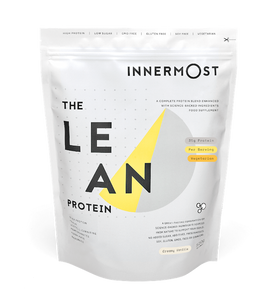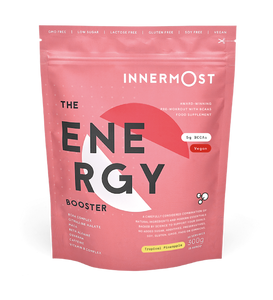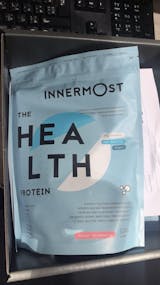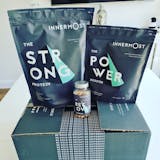For this article, we are looking at an ancient form of medicine that dates to around 5000 years ago from India – Ayurveda. Keeping your body in tip-top position is difficult – especially during this cold and flu season we are currently experiencing. As human beings, we are always seeking new ways to detox our body (like our Detox Booster) and create that stability within ourselves that we are missing. But what if we told you that this natural system of medicine could actually steer you clear of any disease and bring a harmonious balance to your being? It is stated that practicing an Ayurvedic lifestyle can in fact slow down the aging process, improve the immune system…and ensure that not just the body, but our minds too are functioning to the max. There’s a lot to unpack here, and for those of you who are intrigued as to why and how you can practice Ayurveda, we have got you covered!
History of Ayurveda
For some history, Ayurveda originated from the ancient Vedic culture which over the course of thousands of years was taught by accomplished masters to their disciples. In Sanskrit – the ancient language of India, the word Ayurveda actually translates to ‘The Science Of Life’. The belief of this natural system is that everything in life is connected. This escalates to our bodies - health and wellness can only be at their best once harmony is achieved. When one thing is out of spec and the individual feels stressed or imbalanced, this is when the dreaded illnesses strike. This doesn’t just mean physical mind; it also leads to mental difficulties as well. As a whole, Ayurveda revolves around implementing lifestyle interventions that provide a balance among your whole being – mind, spirit, and physical body.
The three Doshas
It doesn’t stop there – according to Ayurveda there are three Doshas or otherwise known as life forces that make up a being. Although all three are present within us, it is stated that different people have a dominance of one or two instead of all three. However, the amount of these can change throughout your lifetime depending on someone’s environment and diet – to name a few. These forces are named Vata, Pitta, and Kapha. Each of these represents a different energy and relation to the body. Let’s delve in deeper.
Vata Dosha
This energy is related to space and air and is associated with the movement of the body. In general, this energy is more prominent in Autumn and the colder months due to relation to the cold weather and our adapting bodies. Therefore people who are dominant in Vata need to be particularly careful in terms of their diet and lifestyle in this season. The components of the body that relates to Vata are:
- Blinking
- Breathing
- Pulsation of the heart
- Tissue and muscle movement
- Movements of cells
It is known that people who are dominant in Vata are quick to action, flexible and creative, but on the flip side, when there’s an unbalance, this can turn to nervousness, fearfulness, and anxiety. However, there are ways to keep on top of this ranging from diet and the food consumed, sleep pattern, and general healthy habits like taking time for yourself and bathing regularly – we all love a good bath right? The guidelines for balancing Vata are:
- Keep calm
- Keep warm
- Avoid cold or raw foods
- Limit your exposure to extremely cold temperatures
- Eat warm foods and spices
- Get plenty of rest
- Keep up a regular routine
Pitta Dosha
This second energy symbolises fire and water and relates to the body’s metabolic system as well as digestion, hormones, absorption, assimilation, nutrition, and body temperature. Interestingly, it is said that people who are most dominant in Pitta take on a particular look. Their body types are of medium build and height with tanned skin lined with lots of moles and freckles. In terms of personality and being, they are known to have warm bodies, intelligence, and great ideas. However, when this is out of whack, they fall into an agitated state and become snappy. Just like Vata, there are ways that someone with Pitta dominance can stay on top and dampen down their heat:
- Avoid excessive heat
- Avoid excessive oil
- Limit your salt intake
- Stay away from steam
- Eat cooling foods and not spicy foods
- Exercise during the cooling part of the day
Kapha Dosha
Ah, now we come to the last energy – Kapha. This particular energy resonates with earth and water and is the one that holds everything together. Linking to the body’s structure, Kapha consists of bones, muscles, and tendons. Those who are dominant with this tend to have strength, stamina, and endurance but also are calm and tolerant beings. Again, it is said that there are common physicalities when someone resonates more with Kapha: they tend to have thick skin, and their bodies are well-developed with strong muscles. When an imbalance is present, this can cause greed, attachment, possessiveness, and envy. To avoid this there are guidelines to stick to:
- Keep active
- Avoid dairy-based products and choose dairy-alternatives
- Avoid fatty and oily foods
- Vary up your routine
- Eat light, dry food
- Don’t nap during the day
- Avoid iced drinks
Other ways to incorporate Ayurveda into your life
We know that completely switching up your habits and following the pointers above are not easy. But for those of you who want to start practicing Ayurveda and are seeking body balance, there are lifestyle changes that you can implement daily to ensure this want comes to fruition. All it takes is a small step.
Set an alarm: Try to set your alarm before sunrise as according to Ayurveda this period is the ‘time of knowledge’. It is said that waking up before dawn can have some boosting benefits like increasing energy levels, strengthening immunity, and sorting out aches and pains.
Drink water as soon as you wake: Before you indulge in your usual mug of coffee or tea, take time to intake some hot water, or if you can’t stomach plain – add some ginger and lemon juice to the mix. This warm water will loosen any toxins in the body and stimulate the gut. Always keep hydrated!
Limit snacking: We know it is all too easy to grab all the convenience snacks under the sun because you just feel a ‘little bit peckish’. Well, this actually does more harm than good. For your digestive system to fully work, it is best to leave at least five hours between meals. Tricky I know, but your body will thank you for it.
Eat light in the evening: Carrying on with digestion, in terms of Ayurveda principles it is said that our ‘Agni’ (digestive fire) requires heat which is found when the sun’s heat is optimal – around the time of 12pm to 2pm. By the evening, our bodies are winding down and are prepping for sleep. Eating a big meal in the evening will put your Agni in a spin and therefore your body will find it harder to digest the food and subsequently sleep. To combat this, make sure to eat a bigger meal at lunch instead and then consume a light snack before bed.
Practice breathwork: Take a deep breath and relax. I’m sure we have all heard that at some point in our lives. But with Ayurveda, practicing breathwork can in fact balance out the body and keep you in check. Breathing deeply releases fresh oxygen to our cells, slows down our heart rate, relaxes our muscles, and lowers blood pressure. As simple as it sounds, take time to breathe.
Summary
Ayurveda might not be for everyone, we know this. But in today’s hectic and unpredictable environment, ensuring our bodies are balanced and harmonised is a must to get us through. We go through a lot with our day-to-day routines, so finding a lifestyle choice like Ayurveda that you can implement will always be of benefit in the long run. Isn’t it great that an ancient form of medicine for years ago is still being practiced today? We have only touched on the surface with this, and for those who are intrigued to start an Ayurvedic lifestyle, there is an array of guidance on the internet to help you with your journey. Just note…start small and keep that balance. You’ve got this.























